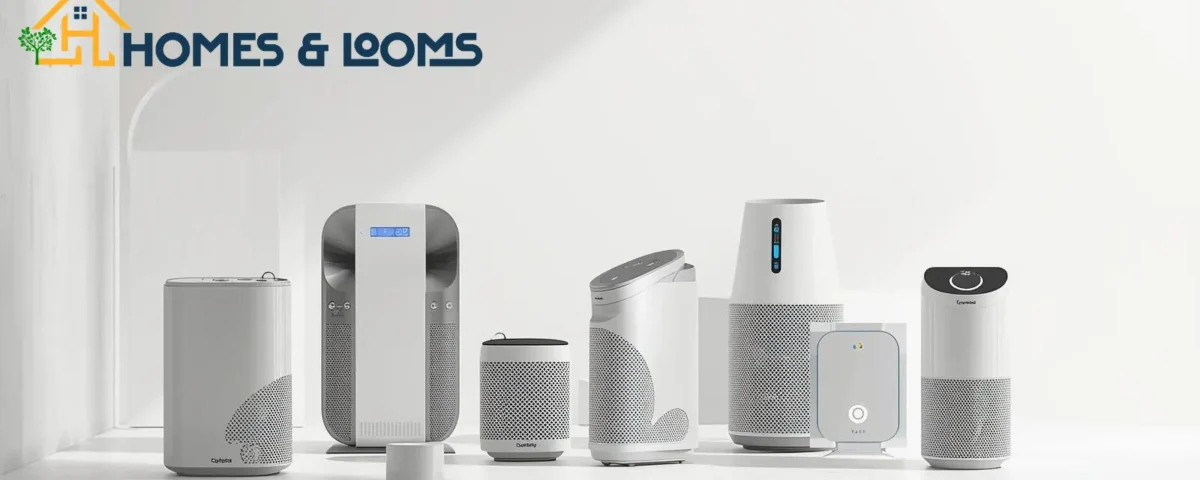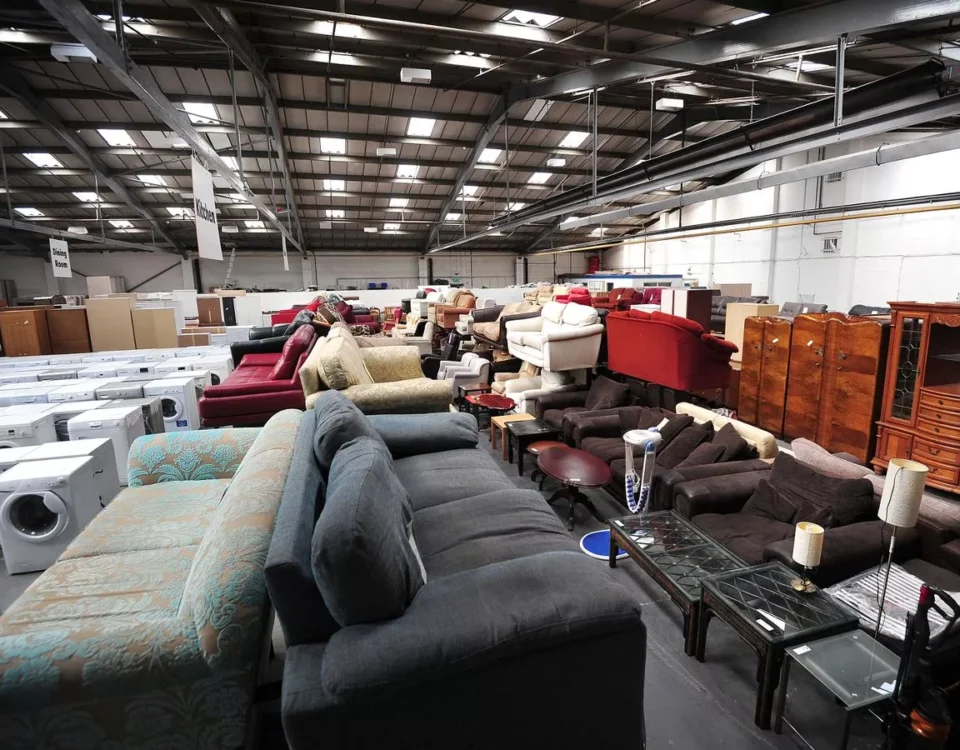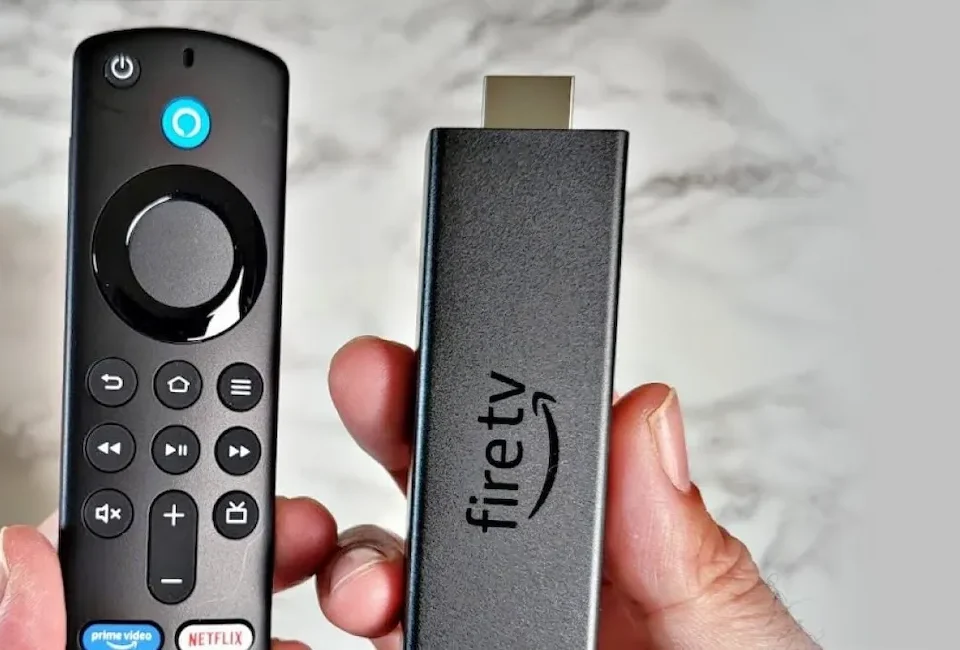
How to Design Your Dream Tea Spot & Master the Art of ‘Spilling the Tea’
September 25, 2025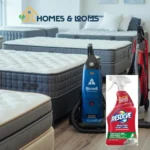
Hybrid vs. All, Foam Mattress: The Ultimate Guide to Choosing Your Best Sleep
September 28, 2025Our Indoor Air Story
It started with a sneeze that wouldn’t quit, a morning congestion that lingered far too long, and an uneasy feeling every time we stepped into our own home. Despite daily cleaning and occasional air fresheners, dust settled relentlessly, odors lingered in corners, and allergies seemed to tighten their grip on every family member. We were living in a space that should have been a sanctuary, yet it felt like a battleground against invisible intruders: the pollutants in our indoor air.
We tried quick fixes, expensive sprays, over, the, counter remedies, even changing cleaning routines, but nothing seemed to make a real difference. Advice was everywhere and often conflicting: “Open the windows!” one source said. “Seal them tightly!” another insisted. The invisible nature of indoor air pollution made it all the more frustrating, and worrying. With children and elderly family members in the house, the stakes felt higher. Could these unseen particles be silently affecting our health in ways we didn’t even realize?
This guide is the story of how we tackled that challenge head, on. It’s a comprehensive roadmap for anyone tired of the sneezes, the dust, and the uncertainty. From understanding the sources of indoor pollutants to discovering the products and strategies that actually work, we’ve documented every step. You’ll find actionable advice, tested solutions, and a clear path to cleaner, healthier air in your own home.
As someone who has personally struggled with severe seasonal allergies and has spent years researching how to create a truly healthy home environment, I embarked on this mission not just for myself but for the well, being of my family. What I learned, and what I’m sharing here, can help you transform your home into a place where the air feels as clean and refreshing as it
Understanding the Invisible Threat: Common Indoor Air Pollutants
The air inside our homes can feel clean and harmless, but in reality, it often carries a hidden mix of pollutants that affect our health in subtle and long, term ways. Understanding what’s in the air is the first step toward protecting your family.
Dust & Dust Mites
Dust is more than just an annoyance, it’s a carrier for tiny dust mites that thrive in bedding, carpets, and upholstery. These microscopic creatures release proteins that trigger allergic reactions and can worsen asthma. Common symptoms include sneezing, itchy eyes, and nighttime congestion. Regular vacuuming and using allergen, proof mattress and pillow covers can significantly reduce exposure.
Pollen & Outdoor Allergens
Pollen and other outdoor allergens can easily sneak indoors through open windows, doors, or even on clothing and shoes. For seasonal allergy sufferers, this can prolong discomfort and trigger sneezing, watery eyes, and fatigue. Keeping windows closed during peak pollen seasons and using air purifiers with HEPA filters can help minimize these effects.
Pet Dander
Pet owners know the struggle of persistent fur, but it’s the invisible dander that causes the most trouble. Proteins in pet skin flakes can linger in carpets, furniture, and even clothing, causing allergic reactions long after your pet has left the room. Frequent grooming, vacuuming, and using HEPA, filtered air systems can help control these allergens.
Volatile Organic Compounds (VOCs)
VOCs are chemicals emitted by everyday items like new furniture, paints, cleaning products, air fresheners, and some building materials. Exposure can lead to headaches, respiratory irritation, and, over time, more serious health effects. Ventilating new products and choosing low, VOC alternatives can reduce your risk.
Mold Spores
Mold grows in damp areas, leaks, or poorly ventilated spaces. Mold spores in the air can irritate the respiratory system, cause allergic reactions, and trigger asthma attacks. Promptly addressing water damage and maintaining low indoor humidity are key to preventing mold growth.
Carbon Monoxide (CO)
CO is a colorless, odorless gas produced by furnaces, stoves, and vehicle exhaust. Even small concentrations can be dangerous, leading to headaches, dizziness, or worse, long, term exposure can be fatal. Installing CO detectors and ensuring appliances are properly maintained are essential safety measures.
Radon
Radon is a naturally occurring radioactive gas that seeps into homes from the soil and rocks beneath them. Long, term exposure is linked to lung cancer, making testing and mitigation especially important for homes in high, radon areas.
Why This Matters
According to the Environmental Protection Agency (EPA), indoor air can be 2 to 5 times more polluted than outdoor air, with some homes reaching levels up to 100 times higher. Poor indoor air quality (IAQ) exacerbates allergies, asthma, and other respiratory conditions. It can also disrupt sleep, reduce cognitive function, and pose long, term health risks for vulnerable populations like children, the elderly, and those with chronic illnesses. Think of it as a “secondhand smoke” effect, air pollutants quietly affecting everyone in the home.
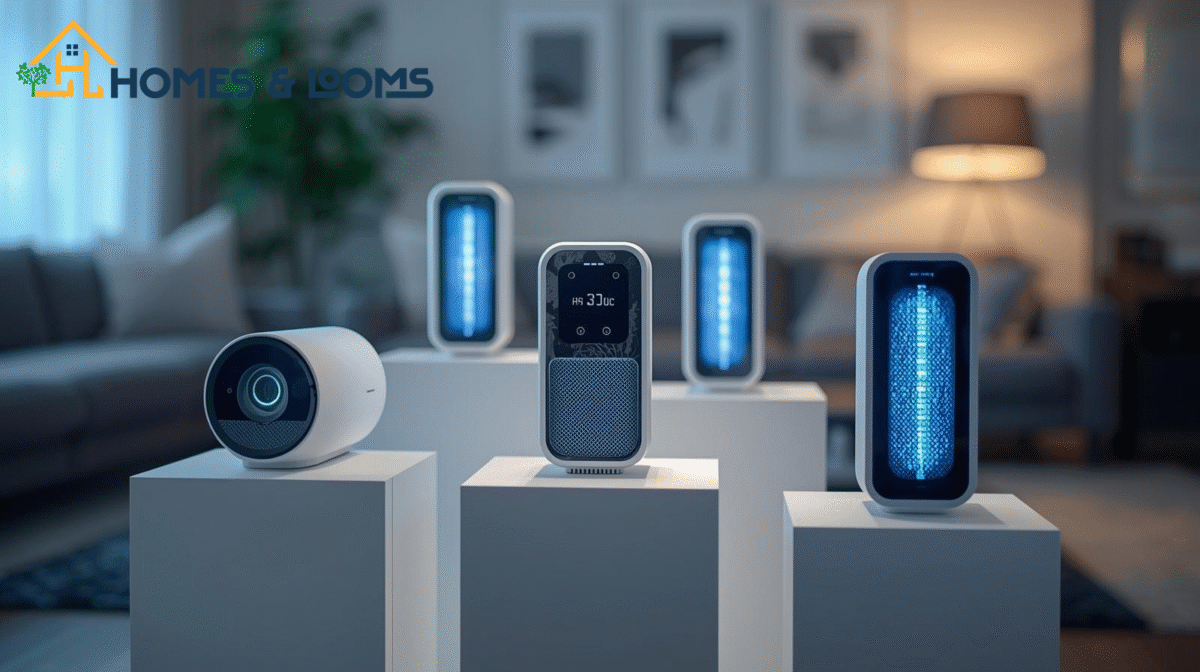
Pollutant Profile: What’s Hiding in Your Home’s Air?
A visual guide to the invisible threats and how to fight back.
Volatile Organic Compounds (VOCs)
Mold & Mold Spores
Dust Mites
Pet Dander
Fine Particulate Matter (PM2.5)
Step 1: Conduct an Air Quality Audit
Before investing in equipment, start with a simple assessment to pinpoint problem areas and plan your approach.
1 Self-Assessment Questionnaire
- Do you notice lingering odors or musty smells?
- Are there visible signs of mold or water damage?
- Does your family experience unexplained fatigue, sneezing, or congestion?
- Have you recently brought in new furniture or undergone renovations?
- Do you have pets in the house?
2 Visual Inspection Guide
- Check for Moisture: Inspect damp corners, ceiling stains, or water leaks.
- Identify Dust Hotspots: Look at carpets, vents, and behind furniture.
- Observe Airflow: Note areas with poor ventilation or stagnant air.

Element Indoor Air Quality Monitor
Step 2: Method 1 – Enhancing Ventilation
Air circulation is critical to diluting pollutants and maintaining a healthy home environment.
Natural Ventilation: Open windows daily, even for short periods, while considering pollen counts or outdoor pollution. Cross, ventilation, opening windows or vents on opposite sides of the house, creates airflow paths that refresh indoor air efficiently.
Targeted Ventilation:
- Use exhaust fans in kitchens while cooking and bathrooms after showers.
- Laundry rooms or damp basements can benefit from intermittent fan use.
HVAC System Ventilation:
- Ensure your system brings in fresh outdoor air and circulates it properly.
- Consider whole, house solutions like Heat Recovery Ventilators (HRVs) or Energy Recovery Ventilators (ERVs) for consistent airflow.
Expert Tip: Balance ventilation with energy efficiency. In colder climates, open windows briefly and rely on smart fan usage or HRVs to maintain warmth without sacrificing air quality.
Step 3: Method 2 – Source Control & Eliminating Pollutants
Preventing pollutants from entering the air is more effective than filtering them later.
Materials & Products:
- Choose low, VOC or no, VOC paints, furniture, and building materials.
- Allow new furniture or carpets to off, gas in a well, ventilated area before full use.
- Avoid synthetic fragrances, scented candles, and chemically, heavy cleaning products.
Cleaning & Dust Control:
- Dust regularly with microfiber cloths.
- Wash bedding and soft furnishings often.
- Use a HEPA, filtered vacuum to capture dust mites, dander, and pollen.
Pet Dander: Groom pets regularly and designate pet, free zones to reduce allergens.
Moisture Control:
- Fix leaks promptly and maintain proper drainage.
- Use exhaust fans in bathrooms and kitchens to manage humidity.
- Maintain indoor humidity between 40, 60% to deter mold and dust mites.
Safety Measures:
- Install and maintain carbon monoxide detectors.
- Test for radon and implement mitigation strategies if levels are high.
Product Recommendations: VOC, free cleaning products (Branch Basics, Seventh Generation (check on Amazon) 8.1k Rating) and dehumidifiers (Frigidaire, Honeywell) can simplify source control.
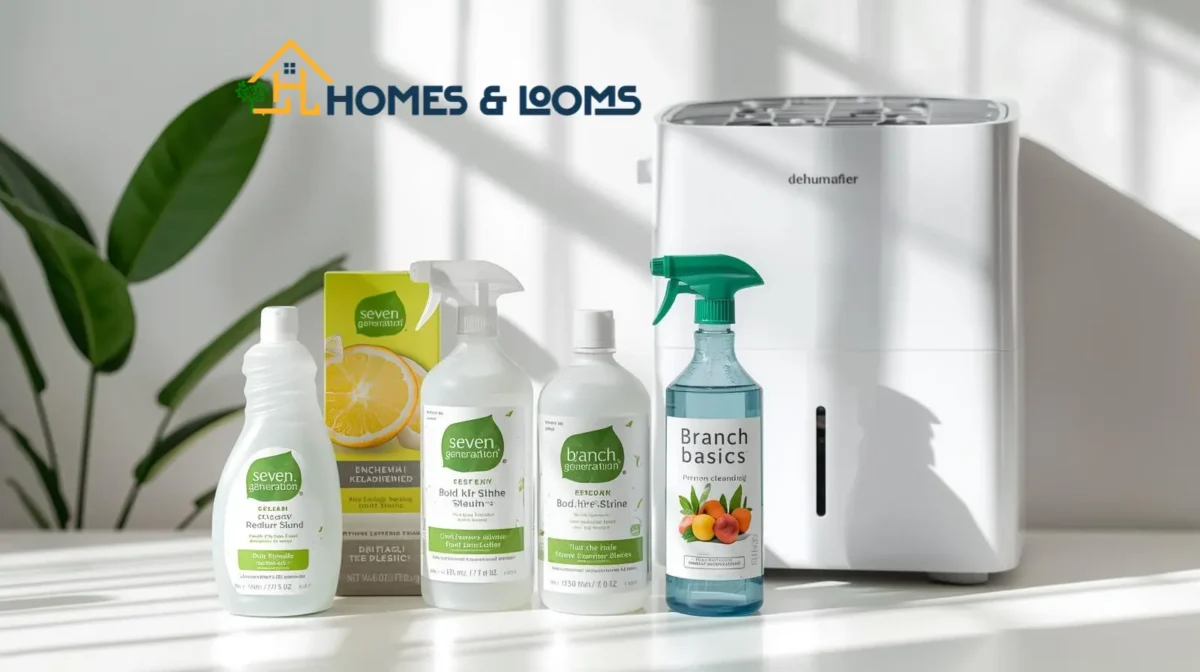
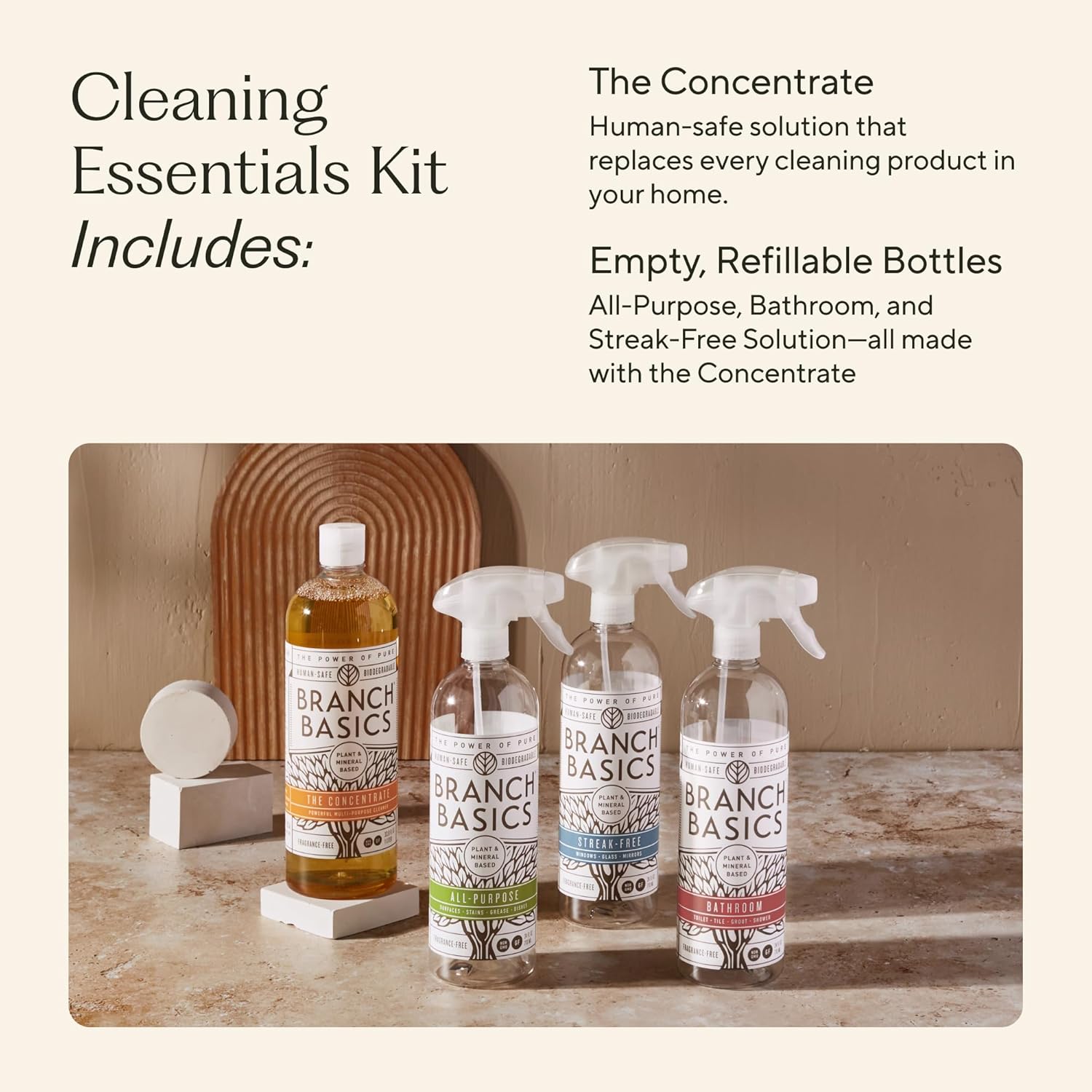
Branch Basics Cleaning Essentials Kit
Step 4: Method 3 – Advanced Filtration & Air Purification
Once sources are managed, filtration ensures remaining particles and gases are removed.
Air Purifiers:
- HEPA Filters: Capture fine particles like dust, pollen, and pet dander.
- Activated Carbon: Absorbs odors and VOCs.
- Other Technologies: UV, C or ionizers can complement, but rely on HEPA as the main defense.
Selection Criteria:
- CADR rating: Match purifier to room size.
- Filter Type: HEPA plus activated carbon is ideal.
- Energy Efficiency: Look for Energy Star certified units.
- Noise Level: Important for bedrooms.
- Smart Features: Connectivity for monitoring and scheduling.
- Maintenance: Consider filter replacement frequency and cost.
HVAC System Filters:
- Upgrade to HEPA or MERV 11+ filters for optimal particle removal.
- Replace regularly to maintain system performance and air quality.
Humidity Management:
- Use dehumidifiers in damp spaces like basements.
- Use humidifiers in dry climates or winter months to maintain comfort and prevent respiratory irritation.
Complementary Approaches:
- Indoor plants can slightly improve air quality and humidity balance.
- Beeswax candles (unscented) can help reduce VOCs compared to synthetic candles.
- Maintain consistent cleaning routines to support all other efforts.
Expert Tip: Place air purifiers in the rooms where your family spends the most time, ensuring the CADR matches the room size.
This multi, layered approach, air quality audit, ventilation, source control, and advanced filtration, helped us systematically improve our home’s indoor air. By combining daily habits, smart equipment choices, and proactive maintenance, cleaner air became a manageable, sustainable reality.
Our Top Picks for Air Purifiers, Filters & Monitors
Choosing the right tools for cleaner indoor air can feel overwhelming. Over time, we tested several products in our own home, noting real-world performance, maintenance, and ease of use. Here's a tiered roundup of our top recommendations:
| Product/Model | Key Features | CADR/MERV Rating | Best For | Pros | Cons | Price Range |
|---|---|---|---|---|---|---|
| Coway Airmega 200M | True HEPA, Activated Carbon, Auto Mode, Filter Indicator | 1,111 (Smoke) | Allergies Dust Odors Medium-sized Rooms |
|
|
$300
Check on Amazon |
| Levoit Core 300S | True HEPA, Activated Carbon, Pre-filter, Quiet operation, Smart control | 131,678 (Smoke) | Small Rooms Budgets Pet Dander Light Odors |
|
|
$149.99
Buy on Amazon |
| Blueair Blue Pure 211+ Auto | 3-in-1 filter (pre-filter, particle, carbon), Auto mode, Washable pre-filter | 13,100 (Smoke) | Large Rooms Families VOCs General Air Quality |
|
|
$349
Buy on Amazon |
| Air Filters | ||||||
| MERV 13 HVAC Filter | Electrostatic charge, pleated design | 18,506 MERV 13 |
Whole-home filtration Allergies Dust Airborne particles |
|
|
$46.99
Buy on Amazon |
| Air Quality Monitors | ||||||
| Awair Element IAQ Monitor | Measures PM2.5, VOCs, CO2, Temp, Humidity, Smart alerts | 1000 | Comprehensive monitoring Data tracking Smart home integration |
|
|
$185.82
Buy on Amazon |
Expert Tip
Place air purifiers strategically in rooms where your family spends the most time, ensuring CADR ratings match room size. Track readings from your IAQ monitor to see which interventions have the greatest effect.
Method 4: Natural Solutions & Ongoing Maintenance
While technology is critical for major pollutant control, natural and consistent habits complement these efforts.
Indoor Plants: Certain plants can slightly improve air quality and add aesthetic value. Recommended species include:
- Snake Plant
- Spider Plant
- Peace Lily
Beeswax Candles: A natural alternative to paraffin, beeswax candles can produce less soot and may release negative ions, though they should not be relied upon for serious air purification.
Salt Lamps: Mostly aesthetic. They don’t meaningfully improve air quality, but can enhance your home’s ambiance.
Natural Air Fresheners: Essential oil diffusers (used cautiously) or simple solutions like baking soda for odor absorption are safe alternatives to chemical sprays.
Cleaning & Maintenance:
- Dusting and vacuuming regularly (HEPA, filtered vacuums are best).
- Change air purifier and HVAC filters according to manufacturer guidelines, typically every 1, 3 months for HVAC filters.
- Sweep and mop floors to reduce dust and allergens.
Professional Duct Cleaning: Consider every few years, especially if:
- You have pets or allergy sufferers in the home.
- You’ve recently moved into an older house.
- You notice persistent dust despite regular cleaning.
Expert Tip: Consistency is key. Even the best air purifiers won’t work efficiently if filters aren’t replaced or if dust and moisture build up in your home. Combine smart technology with natural approaches and routine maintenance for lasting results.
Our Results: The Impact of Cleaner Air on Our Family's Health & Well, being
After implementing our step, by, step approach, the difference in our home was unmistakable. Allergy symptoms that had once plagued us daily, sneezing, congestion, itchy eyes, were noticeably reduced. Mornings became easier, breathing felt clearer, and even sleep quality improved.
Dust, which had previously settled within hours despite regular cleaning, accumulated far more slowly. Our home now stays visibly cleaner, reducing the time and effort spent on daily chores. Lingering odors vanished, leaving rooms consistently fresh, smelling and inviting.
Tracking our progress with an indoor air quality monitor added tangible proof to the improvements. For example, our average PM2.5 levels dropped by over 40%, and VOC readings were consistently lower than before. Seeing the numbers improve provided reassurance that our interventions were effective.
Beyond measurable metrics, the overall impact on our family’s well, being has been profound. Energy levels are higher, moods are more stable, and there’s a new sense of calm knowing that the air we breathe is genuinely healthier. Even the kids have noticed the difference, enjoying playtime without constant sneezing or congestion.
The effort and investment we put into improving our indoor air quality have paid off in ways that go beyond comfort. Cleaner air has enhanced our family’s health, safety, and quality of life, turning our home into the sanctuary it was always meant to be.
Conclusion & Your Action Plan for Fresher Air
Improving indoor air quality doesn’t have to feel overwhelming. By focusing on three core principles, source control, ventilation, and filtration, anyone can create a healthier home environment for themselves and their family. The key is consistent, practical action rather than perfect execution.
Your Simple Action Plan:
- Assess Your Current Air Quality
Use the self, assessment audit questions: check for lingering odors, visible mold, dust hotspots, and symptoms of allergies or respiratory discomfort. Consider using an indoor air quality monitor for objective data. - Prioritize One Source Control Measure This Week
Choose one area to tackle first, whether it’s switching to low, VOC products, setting up dedicated pet zones, or addressing moisture issues. Small steps add up. - Improve Ventilation Habits Daily
Open windows briefly when outdoor air quality permits, use cross, ventilation techniques, and run exhaust fans in kitchens and bathrooms. Even a few minutes each day makes a difference. - Consider Filtration Upgrades
Start with an HVAC filter upgrade (MERV 11+) or an entry, level air purifier that suits your room size and budget. Check the “tiered approach” section to match solutions to your needs.
Common Myths to Keep in Mind:
- Houseplants alone will not purify your air: They can complement your efforts but won’t replace proper filtration or source control.
- Air fresheners do not clean the air: They mask odors but do nothing to remove pollutants.
Taking the first step is the most important part. Start small, track improvements, and gradually expand your efforts. A cleaner, healthier home is within reach, and every action, no matter how minor it seems, brings you closer to fresher, safer air.
We’d love to hear from you. Share your experiences, ask questions, or leave comments on what’s worked in your home. Together, we can breathe easier and live healthier.




